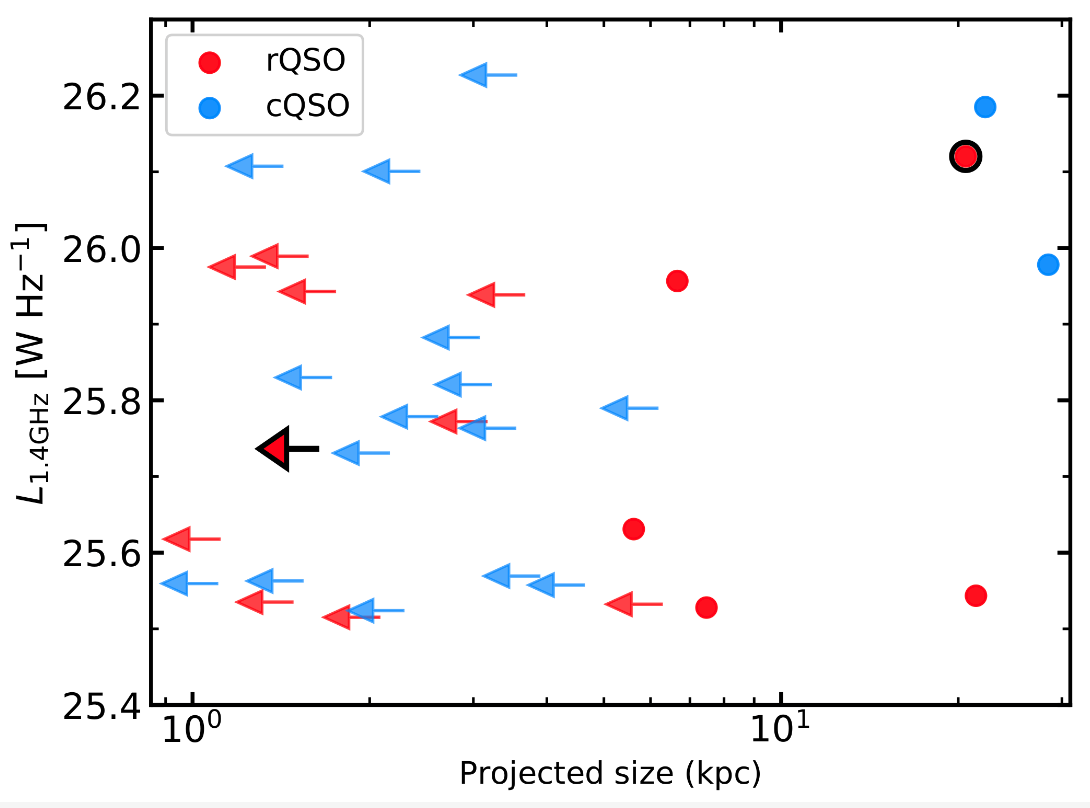CEA News, November 2021
How Are Red and Blue Quasars Different? The Radio Properties
Quasi-stellar objects (QSOs), also known as quasars, are the most powerful class of Active Galactic Nuclei (AGN). Their extremely high bolometric luminosities are now known to be caused by accretion onto a supermassive black hole near the Eddington limit, which places them as some of the most luminous objects in the Universe. Due to the unobscured view of the SMBH accretion disc, which peaks in the ultra-violet (UV), the majority of Type 1 QSOs have very blue optical colors. However, there is a small but significant subset with redder optical-infrared colors (referred to as “red QSOs”).
 Luminosity versus projected size of the radio emission for the e-MERLIN rQSOs and cQSOs. The resolved
sources are displayed as circles and the unresolved sources are shown as upper limits.
Luminosity versus projected size of the radio emission for the e-MERLIN rQSOs and cQSOs. The resolved
sources are displayed as circles and the unresolved sources are shown as upper limits.
A non-negligible fraction of quasars are red at optical wavelengths, indicating (in the majority of cases) that the accretion disc is obscured by a column of dust which extinguishes the shorter-wavelength blue emission. A paper by astronomers at the CEA summarizes recent work by the group, where they find fundamental differences in the radio properties of SDSS optically-selected red quasars. They also present new analyses, using a consistent color-selected quasar parent sample matched to four radio surveys (FIRST, VLA Stripe 82, VLA COSMOS 3 GHz, and LoTSS DR1) across a frequency range 144 MHz–3 GHz and four orders of magnitude in radio flux. This shows that red quasars have enhanced small-scale radio emission (∼kpc) that peaks around the radio-quiet threshold (defined as the ratio of 1.4 GHz luminosity to 6 μm luminosity) across the four radio samples. Exploring the potential mechanisms behind this enhancement, they rule out star-formation and propose either small-scale synchrotron jets, frustrated jets, or dusty winds interacting with the interstellar medium; the latter two scenarios would provide a more direct connection between opacity (dust; gas) and the production of the radio emission. In a future study, using new multi-band uGMRT data, they aim to robustly distinguish between these scenarios.

